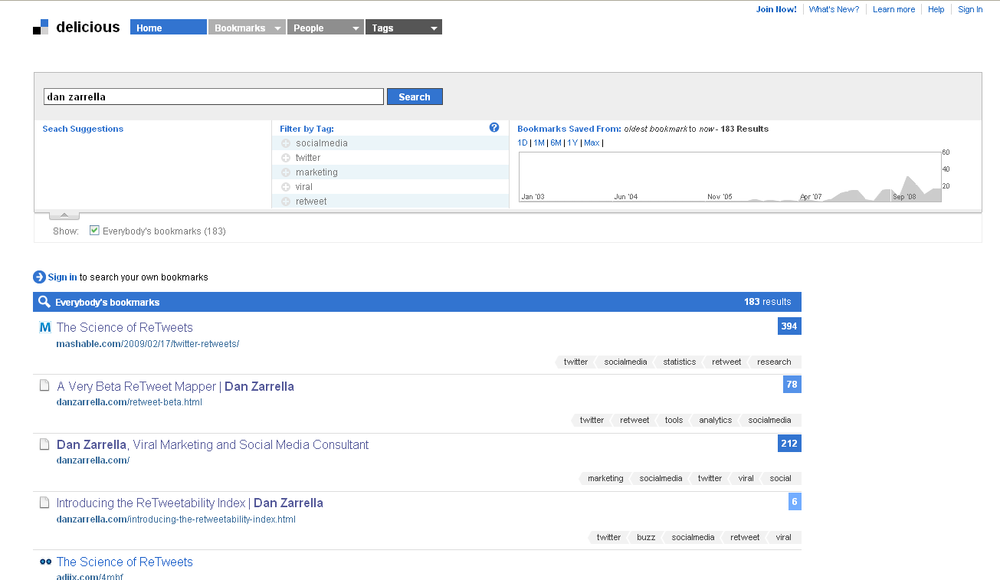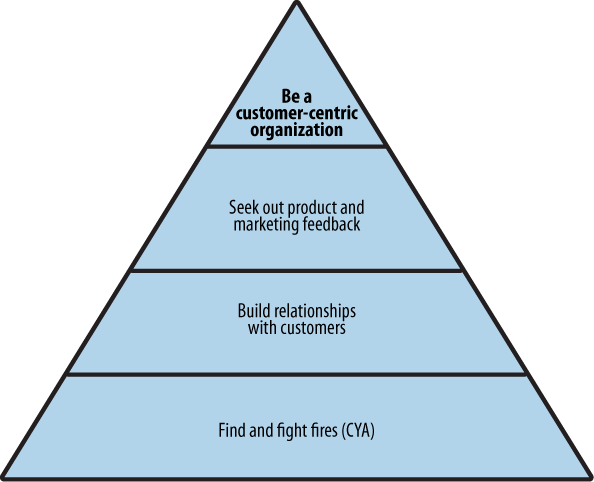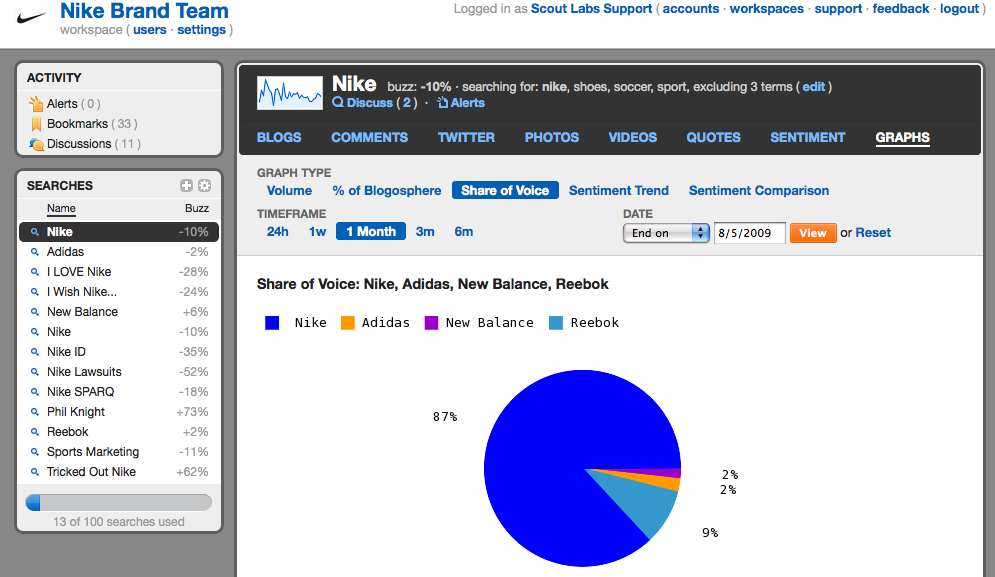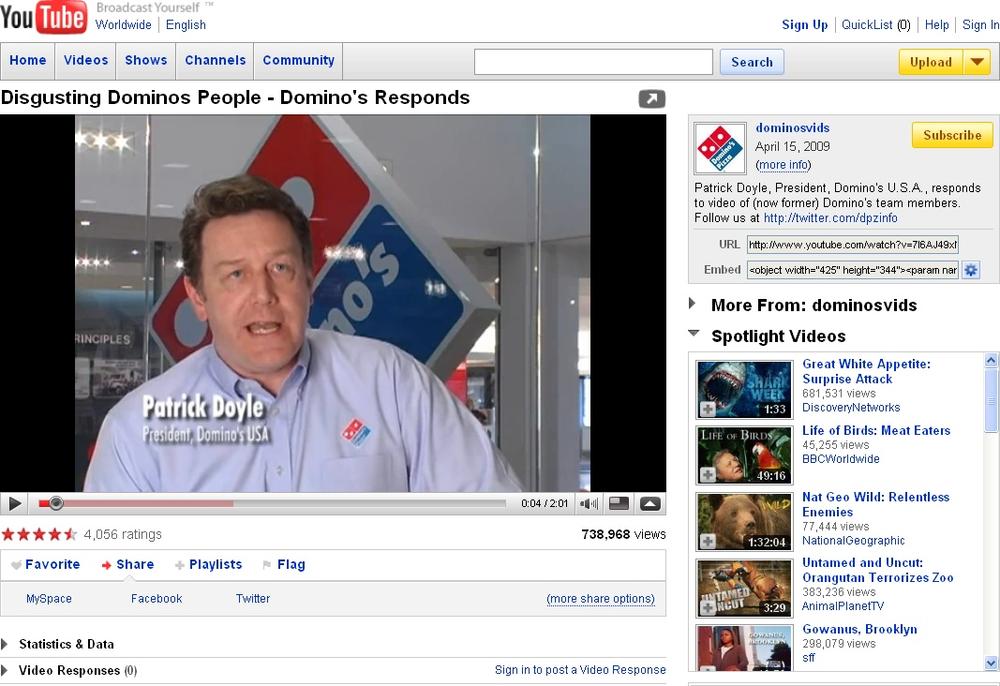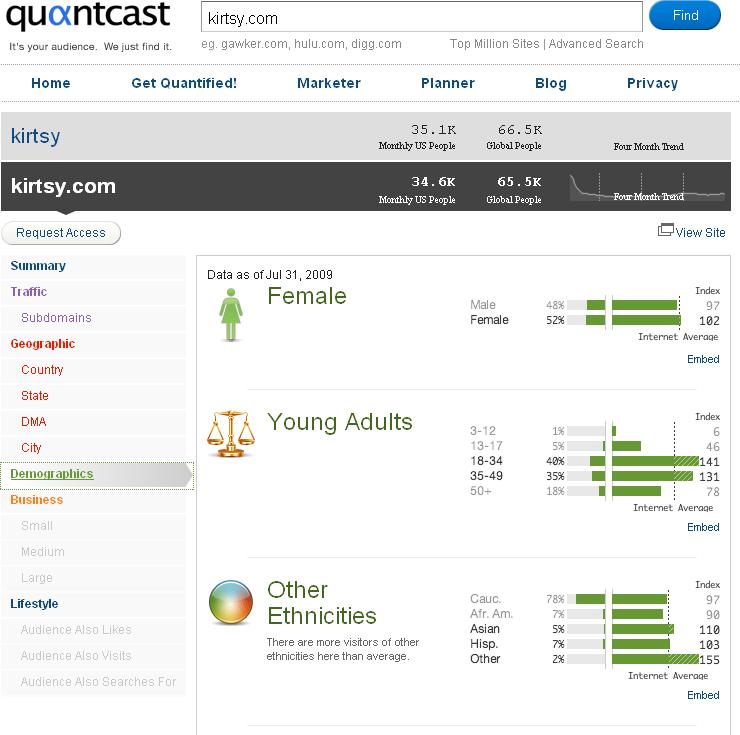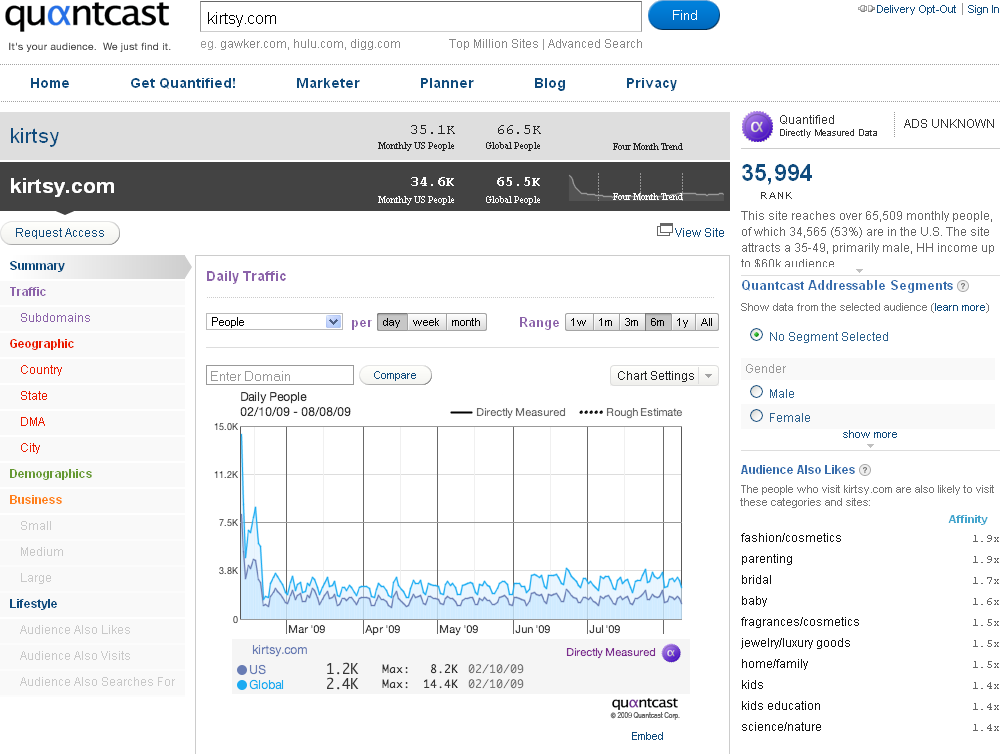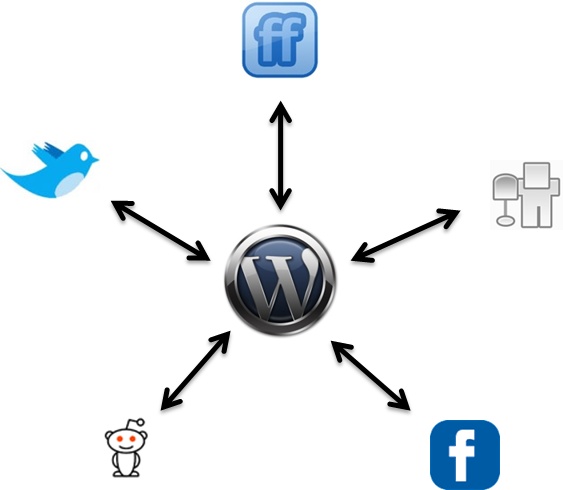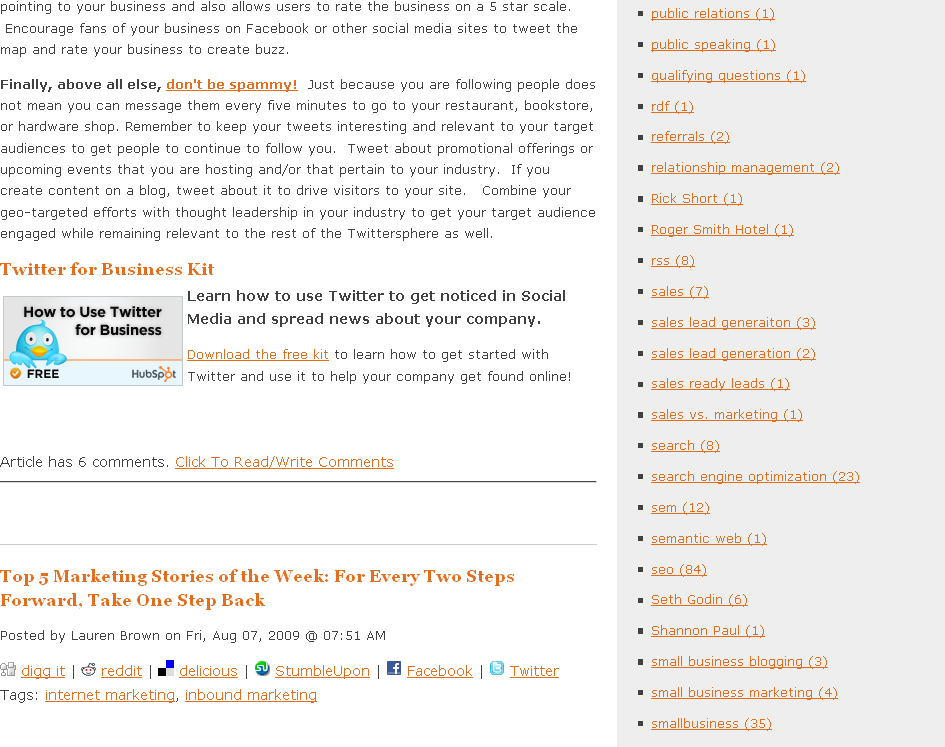Strategy and tactics are inseparable. You can't design a strategy without deep, firsthand knowledge of the tactics you'll be using, and tactics are aimless without a strategy to guide them. In the preceding eight chapters, I introduced you to eight different categories of social media tools and how you can leverage them for marketing. Now it's time to start thinking about them as parts of your whole marketing mix.
If you've been doing other kinds of marketing for your business, you'll have some understanding of your "brand" and positioning in your market. This is your vision, and your social media strategy should fit with your established identity. But don't let the dead hand of history limit the new ideas you're willing to try out or the risks you're willing to take. One of the worst mistakes a new social media marketer will make is to apply the same strategies from the offline broadcast world to the social Web.
Before you launch into a social media conversation, listen. As you do when joining a new forum, lurk in every medium you're going to enter to get a sense of the rules and customs, and of who the influential people are.
Whether you're a local business or an international brand, chances are good that people are already talking about you on the Web. But before you can get involved in those conversations, you have to start listening. You can't respond if you don't know what is being said, where it is being said, and who is saying it. Monitoring social media is an ongoing process, and you should use multiple systems to be sure nothing slips through the cracks—the right (or wrong) story can come from anywhere and blow up in your face. You don't want to get caught off guard.
The first tools you should be using allow you to search for your name, business name, and product names; you should then subscribe to the search results via RSS. Set up an account on Google Reader (or your feed reader of choice) with these feeds, and check the account once or twice a day. For simplicity, I mashed up all the sources in the following list using Yahoo! Pipes, so you can just enter your keyword into the form at http://pipes.yahoo.com/danzarrella/monitoring and subscribe to one RSS of the results. Do this once for each word you'd like to monitor. I recommend your company name, your product names, your name, and key employees' names.
Figure 10-1 shows the results I received after entering the keyword zarrella.
Figure 10-2. Delicious doesn't offer feeds of keyword searches, but you should visit it regularly and conduct a manual search.
The sources in the preceding list are a great start, but there are a few important sites that don't offer feeds of keyword searches. Visit these sites on a regular basis—perhaps once a week—and do a manual search:
Delicious (see Figure 10-2)
Smaller social news and bookmarking sites in your niche
Google offers a free service called Google Alerts that will send you an email whenever a new result appears in the search listing for certain keywords. Set up alerts on the names you're monitoring, as this will help you catch anything else that gets through the rest of your searches.
Don't forget to monitor your industry, niche, and competitors' keywords. This way, you can learn what problems your potential audience has with existing products, what features they wish they had, and what they love most about your competitors, so you can stay ahead of the game and are better prepared to ward off future problems. Think of social media as your focus group. When I spoke with Jennifer Zeszut, CEO of Scout Labs, she described monitoring strategy as a hierarchy of needs, with crisis management at the bottom and market intelligence near the top (see Figure 10-3).
Figure 10-3. In Scout Labs' social media hierarchy of needs, crisis management is at the bottom and marketing intelligence is near the top.
Figure 10-4. This screenshot of Scout Labs' paid monitoring process shows what percentage of mentions of "Nike" come from Nike itself.
A number of paid options are available if your brand is large and gets lots of mentions. These tools can be helpful to identify positive and negative buzz, as well as to delegate responding duties within your company. Paid tools can make your life much easier if your brand is talked about frequently, as the free versions can get overwhelming and provide little organization.
Here are some of the more popular paid monitoring tools available today:
- Radian6 (http://www.radian6.com/cms/home/)
Radian6 is an enterprise-level social media monitoring system that monitors a variety of sources and features workflow functionality that allows you to delegate response tasks in your organization.
- Scout Labs (http://www.scoutlabs.com/)
Scout Labs is a less expensive alternative social media monitoring package. Starting at $99 per month, Scout Labs' charges are based on the number of terms you track, not the number of people at your company using it. Scout Labs also has integrated a number of natural language processing features to provide qualitative analysis alongside the more traditional quantitative data (see Figure 10-4).
- Trackur (http://www.trackur.com/)
Trackur is the least expensive of the three options mentioned here, and it offers many of the features of the others. Its pricing levels determine how often your searches are updated, from once every 12 hours to twice an hour.
Once you've identified a conversation about you or your brands, you must decide whether to engage and what to do when and if you decide to join in. Speed is vital, so start planning your response as soon as possible.
If a negative comment or conversation is something that your customer support team can handle, by all means, let them take care of it. If the problem is more of a public relations or brand crisis event, you need to decide whether your public response will draw more attention to the problem than it would have gotten naturally. Err on the side of responding, but at least ask yourself whether your response will draw unnecessary attention to the conversation.
Remain calm when a potential social media crisis begins to break out; follow the same protocol I talked about when responding to a negative comment on a review site. Becoming angry or defensive won't help your cause—it will only make matters worse. Do what you can to fix the problem that led to the gripe, and detail what you're going to do to make sure it doesn't happen again.
Responses to negative feedback should be communicated in the same medium in which the feedback was communicated; so, if someone posts an embarrassing video to YouTube—such as the video I mentioned in Chapter 1 showing the Domino's employees defiling food that was to be delivered to customers—your official apology should also be posted there (see Figure 10-5). If the original video was tweeted a lot, be sure to also spread your video on Twitter.
Once you've started to monitor what is being said about you and your brand, you should get to know your audience. You want to know who they are, where they hang out online, and how they use the Web.
You're probably in your target market personally, and if not, you likely know a few people who are. Start with them (or yourself): ask them what their favorite sites are and what blogs they read. Build an initial list of these sites as starting points. Say you want to reach an older, more affluent female audience. Head on over to Quantcast and look at the data on sites from your initial list, such as Kirtsy, Sugarloving, BlogHer, and StumbleUpon. You'll see that of these sites, Kirtsy best matches your target audience (see Figure 10-6). Quantcast also gives you some great content preference data indicating which categories of sites Kirtsy users tend to frequent (see Figure 10-7):
Fashion/Cosmetics
Parenting
Bridal
Baby
Fragrances/Cosmetics
Jewelry/Luxury Goods
Home/Family
Kids
You'll notice that for some sites, Quantcast even offers links to other sites that share the same audience, which you can then use to further expand your seeding site list.
Another great place to find blogs about your topical niche is Alltop.com. This "virtual magazine rack" has over 700 categories of blogs covering nearly every subject.
The actual work of social media marketing can be divided into two types: ongoing strategy and campaigns. Your ongoing strategy is the stuff you're doing on a regular basis: blogging, tweeting, contributing to forums, and so on. This is what you should be doing before your monitoring strategy finds an erupting crisis. Your ongoing work builds your brand and reputation.
When you've built a foundation of social media engagement with an established blog, Twitter account, and reputation on various social networks and sites, you can start launching campaigns. These should fit within your ongoing strategy and have specific goals and finite timelines. Viral videos, contests, and product launches should all be supported with dedicated campaigns. Seasonal and timely events are great things on which to base campaigns (see Figure 10-8).
Campaigns are the kinds of social media efforts that result in large but temporary spikes in traffic. I'll detail how to encourage those new users to become repeat visitors a little later in this chapter.
One of the central tenets of Web 2.0 is the idea that web applications should be able to share data and play nicely together. As Figure 10-9 shows, nearly every part of your social media marketing effort can integrate with at least one other part, and users of one kind of social media are likely to be users of other types; it makes sense to invite those who interact with you on Twitter to join your page on Facebook. Here are several examples:
Your Facebook page can be connected to your Twitter account to pull in your tweets.
Your LinkedIn account can include recent posts from your blog as well as presentations you've uploaded to SlideShare.
Plug-ins can be used to automatically tweet your new blog posts.
Your blog should have buttons for easy submission and voting on social news and bookmarking sites.
Your YouTube videos can be embedded on your blog and on your Facebook page.
You can link to your Second Life office from anywhere on the Web, including your blog, Facebook, and Twitter accounts.
Your blog can automatically publish daily posts of the links you've bookmarked on Delicious.
Your blog should have TweetMeme buttons to allow your readers to easily tweet about your content.
A call to action (CTA) is an invitation you make to your website visitors to engage in some type of action that benefits your business aims—and hopefully theirs, too. CTAs usually have one of two goals: stickiness and conversion. Sticky CTAs turn ephemeral waves of traffic into return visitors, whereas conversion-based CTAs lead a visitor into your sales funnel. The former will be accepted by most communities, and the latter should be approached more delicately to avoid the appearance of hucksterism.
Social media campaigns often bring visitors in spikes that quickly dissipate; a video goes viral, or a blog post hits Digg's front page, and you get thousands of visitors for a few days. You want these people to stick around, become engaged with your content, and help promote the next home run.
If your content is hosted on your blog—as much of it should be—you have an easy option: feed and email subscriptions. Consider including invitations in your content: "If you liked this post, subscribe to our blog for more." Another possibility is to offer exclusive content—an ebook, for instance—to subscribers only.
Social media sites with networking functionality also give you the option to encourage your readers to connect with you there. Ask your visitors to follow you on Twitter, fan your page on Facebook, or subscribe to your channel on YouTube. Don't forget to cross-promote; tweet a link to your YouTube channel, and ask people to subscribe (see Figure 10-10).
Conversion-based CTAs are designed to turn a visitor into a customer (see Figure 10-11). There are two types of conversion-based CTAs, depending on your business model: leads and purchases. Very high-ticket items, such as cars or houses, as well as business-to-business transactions, start out as leads. A visitor becomes a lead when she fills out a form on your site that indicates that she's a potential customer. E-commerce sites, such as Amazon, don't have leads. Instead, visitors become customers by purchasing products directly.
Most lead-based businesses have (or should have) a simple conversion CTA in the form of a Contact Us page for interested parties to use. It is often more effective to ask a visitor to give you his information in return for some piece of content. You can require a reader to fill out a short form to download items such as ebooks and video webinars, and base your CTAs around these.
This type of CTA is more obviously commercial and should be used with more care than sticky CTAs. If someone has come to a blog post about a specific type of legal help, offer her an ebook about that area of the law, but don't shove it down her throat.
Remember your brand, but don't just use your old offline tricks in social media.
Keep an eye on what people are saying about you, your products, and your competitors.
Use your ongoing strategy to build a reputation, and then use short-term campaigns to kick-start specific offerings.
Your social media marketing efforts should all work together.
Use calls to action to entice your visitors to stick around and steer them to other offerings on your site.
Don't forget the bottom line: be creative in how you convert social visitors to customers.


